Water damage can quickly become a homeowner’s nightmare—causing gross-looking stains, warping walls and ceilings, and ruining belongings. Yet the real danger of water damage often lies in what follows: mold growth! Mold spores can take hold within as little as 24-48 hours after Sonoma County water damage occurs. Its presence not only compromises your home’s structural integrity but also poses serious health risks to your family. Let’s dive into the connection between water damage and mold, its potential impact, and why professional intervention is vital for the safety of your home and everyone who lives there.
How Does Water Damage Lead to Mold?
Water damage provides the perfect breeding ground for mold. Mold spores, which are naturally present in the air, need just three things to thrive: moisture, organic material, and warmth. When water from a burst pipe, roof leak, or flood enters your home, it not only can lead to water damage Santa Rosa, it also creates an ideal environment for mold to grow.
Where is Mold Most Often Found?
Once mold takes root, it grows rapidly, often in hidden areas like behind walls or under flooring. This makes early detection and swift action essential. Common areas where water damage and mold occur include:
Bathrooms
Persistent leaks or poor ventilation.
Basements
High humidity and seepage.
Attics
Roof leaks and inadequate insulation.
Carpets and Furniture
Absorbent materials that trap moisture.
Why is Mold Growth Dangerous?
Mold isn’t nice to look at, creating dark stains across surfaces wherever it spawns, but its’ unsightly marks aren’t the main reason you should remove mold you find in your home. Mold can be dangerous! Here are a few of the reasons why mold is dangerous for your home and family:
Structural Damage
Mold doesn’t just sit on the surface—it actively consumes organic materials like wood, drywall, and insulation. Over time, this weakens the structural components of your home, leading to costly repairs.
Health Hazards
Exposure to mold can cause a range of health issues, including:
Allergic Reactions
Sneezing, runny nose, and itchy eyes.
Respiratory Problems
Coughing, wheezing, and difficulty breathing.
Skin Irritation
Rashes and hives.
Severe Illness
In extreme cases, prolonged exposure to mold can lead to neurological symptoms and chronic respiratory issues.
Vulnerable Individuals
Certain groups—such as children, the elderly, pregnant women, and those with compromised immune systems—are particularly vulnerable to mold’s harmful effects.
How to Prevent Mold Growth After Water Damage
If your home experiences water damage, it’s important to act fast! Knowing what the signs are of water damage in your house is essential to preventing mold growth. If you notice signs of water damage, here’s what you should do next to stay safe and protect your property:
Address Water Damage Immediately
The key to preventing mold is to act fast. The longer water remains in your home, the higher the chances of mold growth. Begin by identifying and repairing the source of the water, whether it’s a leaky pipe, damaged roof, or flooding.
Dry the Area Thoroughly
Remove standing water and dry affected areas as quickly as possible. Use:
Dehumidifiers
To reduce humidity levels.
Fans
To circulate air and speed up drying.
Professional Equipment
Industrial-grade tools can dry hidden moisture in walls and floors.
Clean and Disinfect
Clean all surfaces with mold-killing solutions and disinfect thoroughly to prevent spores from settling. Pay special attention to porous materials like carpets, which may need professional cleaning or replacement.
Why DIY Mold Prevention Isn’t Enough
While some homeowners may attempt water damage restoration themselves, DIY efforts often fall short of eradicating mold completely. Mold tends to grow in inaccessible areas, and missing even a small pocket can lead to re-infestation.
Professional water damage restoration companies, like Bravo Restoration, use advanced techniques to ensure all moisture and mold are eliminated. Services include:
Moisture Mapping
Pinpointing hidden water sources.
Specialized Cleaning
Removing mold from hard-to-reach areas.
Air Filtration
Capturing airborne spores with industrial-grade equipment.
Bravo Restoration: Your Partner in Water Damage Mitigation
Bravo Restoration offers a comprehensive approach to water damage repair Santa Rosa and mold prevention. With years of experience, our skilled team handles everything from initial assessment to full restoration. We understand the stress water damage causes, and our goal is to restore your home quickly and efficiently while ensuring it remains safe and mold-free. Here’s how we help:
Emergency Response
Available 24/7 to address water damage before mold sets in.
Thorough Inspection
Using state-of-the-art tools to assess damage and identify risks.
Complete Remediation
Safely removing mold and preventing future growth.
Insurance Assistance
Streamlining claims for water damage restoration.
Has Water Damage Affected Your Home? Call Bravo Restoration Today!
Water damage and mold growth go hand in hand, creating a potentially dangerous situation for homeowners. Left unchecked, mold can cause severe health issues and costly structural damage. Acting swiftly and enlisting professional help from Bravo Restoration ensures your home is not only restored but also safeguarded against future issues.
Don’t wait until mold becomes a visible—and hazardous—problem. Contact Bravo Restoration today or give us a call at (707)837-0675 to learn more about how we tackle water damage head-on and keep your home safe and healthy!

